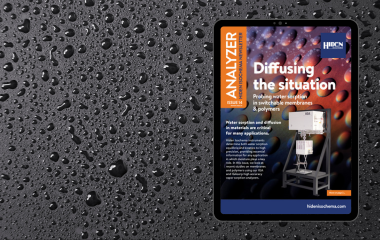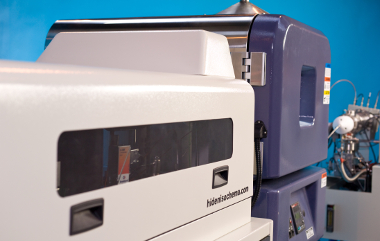Xylene Isomer Adsorption in a Flexible MOF
A recent JACS paper, which we thought was particularly interesting, has just been brought to our attention.
In the Journal of the American Chemical Society (134 (2012) 20466), Stylianou et al have reported on the investigation of the structural transformation of a Zn-based flexible metal-organic framework (MOF) upon desolvation. The researchers, from the Universities of Liverpool and Newcastle in the UK, used an impressive array of both experimental and computational techniques to characterize the material and the associated transformation.
The material, based on Zn and a pyrene-based ligand decorated with benzoate fragments, forms a 2D layered structure with two distinct channels of approximate dimensions 1 nm x 0.35 nm. These channels contain a mixture of the solvent molecules dioxane, H2O and DMF. Upon removal of these solvents, however, the structure transforms to a 3D network with two different types of pore: circular pores with a cross section of 0.9 nm x 0.8 nm and smaller elliptical pores with an approximate dimension of 0.6 nm x 0.5 nm.
This is the first time that such a 2D-to-3D transformation has been fully characterized in a layered MOF constructed from Zn paddlewheels. The transformation, in this case, involves a change in the coordination geometry of the Zn from square-pyramidal to tetrahedral.
The permanent porosity of the desolvated framework was confirmed using carbon dioxide and methane adsorption up to 5 bars (0.5 MPa) at 273 K and 298 K. This was measured on a Hiden Isochema IGA gas sorption analyzer. All isotherms were Type I in the IUPAC classification scheme and were fully reversible, which is indicative of permanent microporosity. BET analysis and Dubinin-Radushkevich (DR) analysis of carbon dioxide adsorption at 195 K were also used, in order to determine the surface area and pore size of the material.
Perhaps more significantly, the adsorption of p-xylene and m-xylene was also investigated. The sizes of these two isomers are in the region of the pore size of the desolvated structure (p-xylene is 0.77 nm x 0.51 nm and m-xylene is 0.74 nm x 0.57 nm). Their separation is also of significant practical interest, but this is difficult because of their similar physicochemical properties, which means that fractional distillation cannot be used; adsorption is therefore one of the alternatives. The adsorption behaviour of the two isomers was found, in this case, to be significantly different: the adsorption isotherm for p-xylene at 303 K up to a pressure of 15 mbar (1.5 kPa) was found to be Type I and reversible, while the m-xylene isotherm under the same conditions has both a different shape and exhibits a significant amount of hysteresis. The uptake of the latter is also significantly higher than the former, and at 15 mbar corresponds to over 130% of the original pore volume, in comparison to 70% in the case of p-xylene. This difference can almost certainly be attributed to the flexible nature of the material.
If you would like to know more about Hiden Isochema IGA gas and vapor sorption analyzers, please do not hesitate to contact us now.


